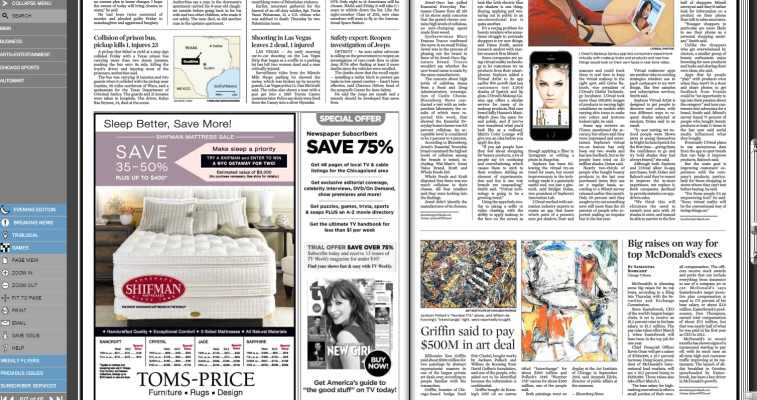There have been numerous posts that include complaints about paywalls from websites and suggestion on "how to" get around them. The problems are growing, and the number of "free" news sites is shrinking. Financial Times, New York Times and Washington Post are but a few of the more restrictive paywalls.
Google News... does not discriminate, and today, the first three links that came up were all to websites with paywalls. Some sites allow one view, some the first few words of the news article, and some allow a limited number of views.
Here is a link from March of last year that discussed this growing problem, and explains some of the ways the paywall are constructed.
Is It Time For Google To Rank News Content Behind Paywalls Better?
The problem is not confined to the national newspapers but most local papers also restrict viewership.
Everyone is entitled to make a profit, so it is not likely that things will get better. Given that, though, despite the enormity of the internet, access to information... especially to legitimate and well founded reportage, is gradually becoming less available. This opens the door to less responsible information and even worse... disinformation.
Not looking for workarounds, but hoping to narrow down my own searches to trusted sites. Google News does not filter paywall sites, and even Drudge is linking to restricted articles.
Just venting, and wondering if others are feeling the same frustration. We have to wonder if the increasing number of blind sound and video pop-up ads that are supporting the "free" websites, will be able to continue to support the content that we're receiving for "free".

Google News... does not discriminate, and today, the first three links that came up were all to websites with paywalls. Some sites allow one view, some the first few words of the news article, and some allow a limited number of views.
Here is a link from March of last year that discussed this growing problem, and explains some of the ways the paywall are constructed.
Is It Time For Google To Rank News Content Behind Paywalls Better?
The problem is not confined to the national newspapers but most local papers also restrict viewership.
Everyone is entitled to make a profit, so it is not likely that things will get better. Given that, though, despite the enormity of the internet, access to information... especially to legitimate and well founded reportage, is gradually becoming less available. This opens the door to less responsible information and even worse... disinformation.
Not looking for workarounds, but hoping to narrow down my own searches to trusted sites. Google News does not filter paywall sites, and even Drudge is linking to restricted articles.
Just venting, and wondering if others are feeling the same frustration. We have to wonder if the increasing number of blind sound and video pop-up ads that are supporting the "free" websites, will be able to continue to support the content that we're receiving for "free".
Last edited:

